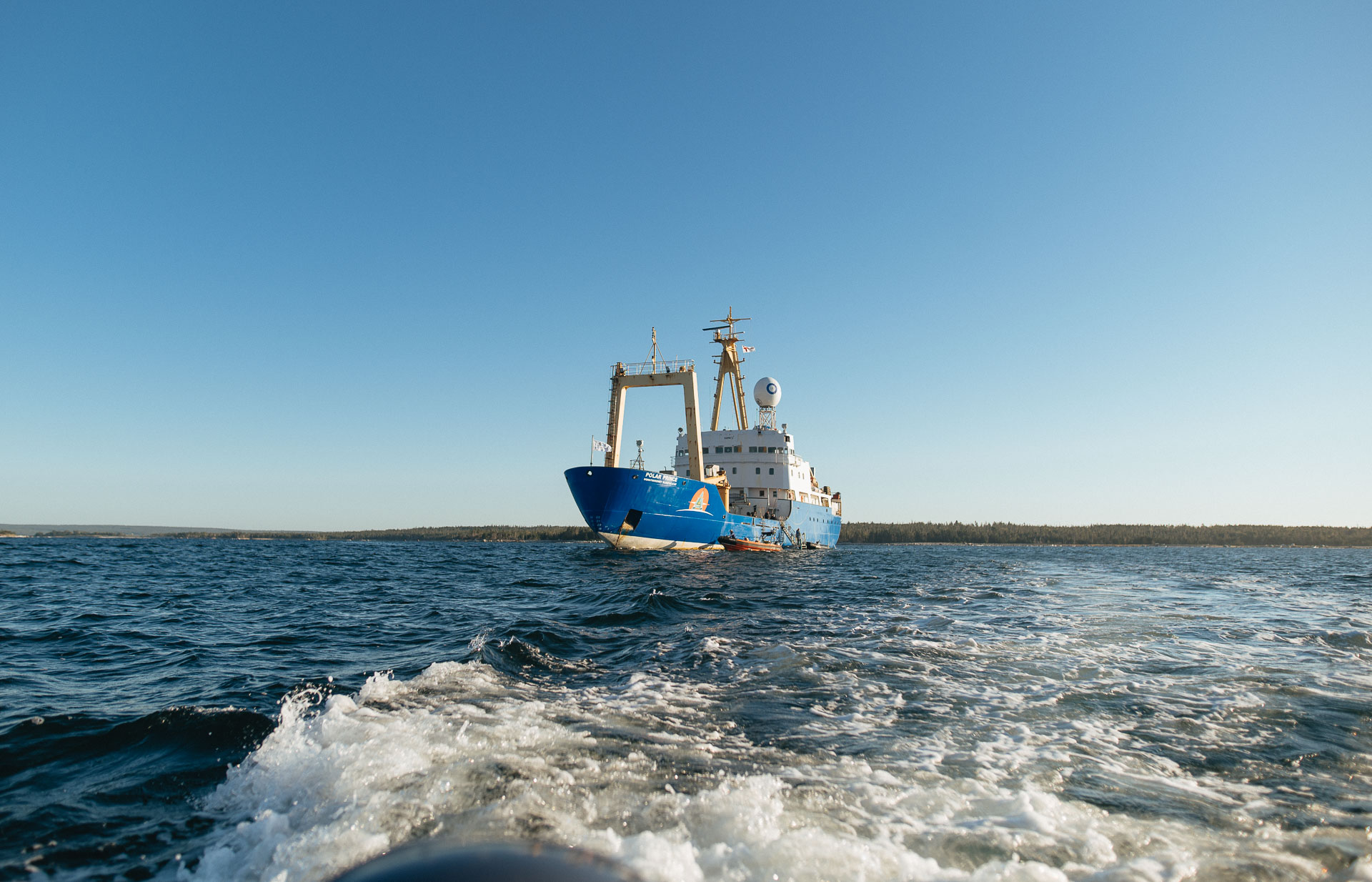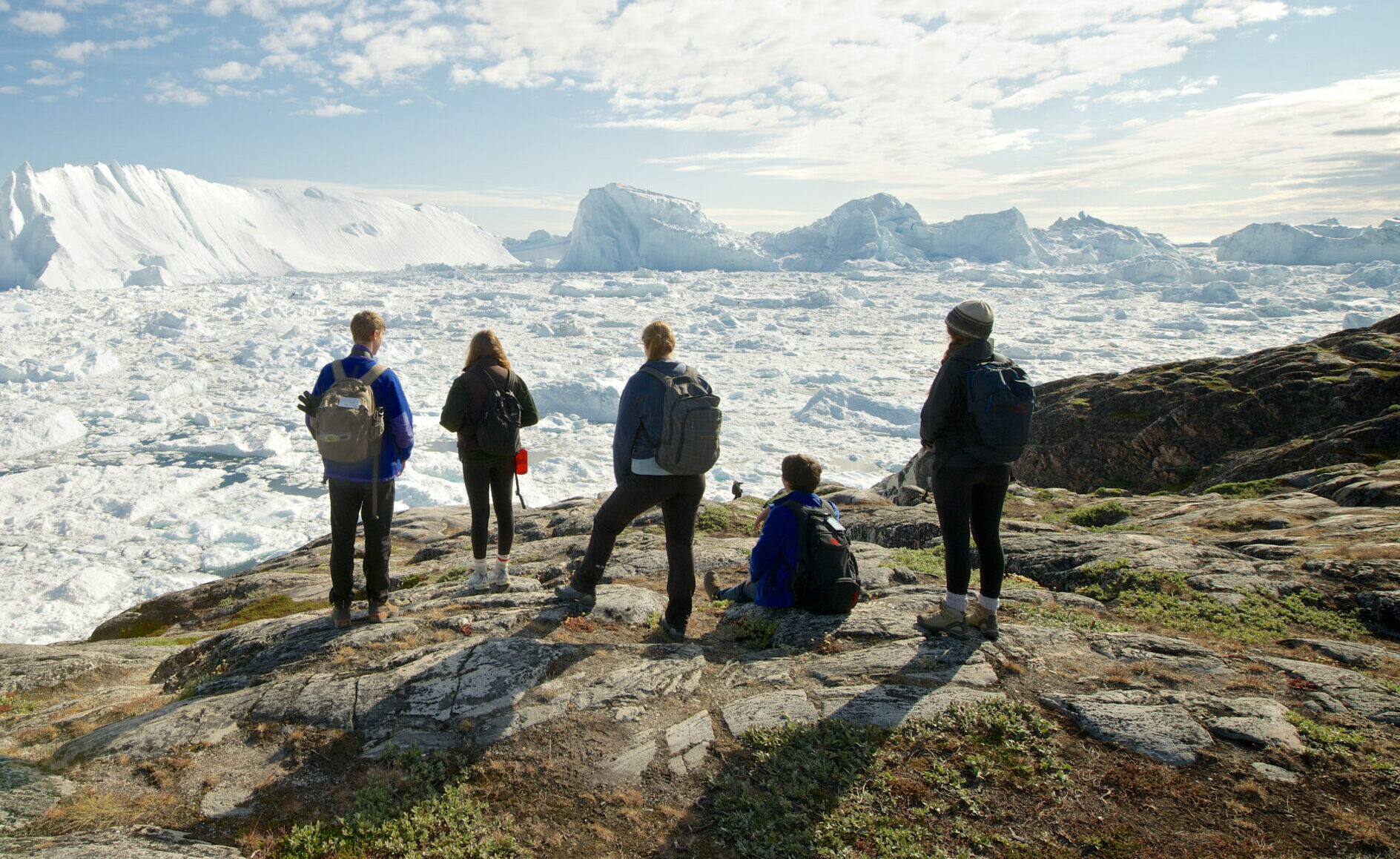Nunatsiavut to Nunavut Expedition 2024: Update Five
Icebergs, polar bears, walruses, oh my!
Our last expedition day in the Torngat Mountains National Park was unforgettable. We awoke to a very foggy anchorage in Martin Bay, but as the early morning hours ticked by the fog lifted and blue skies and sunshine emerged! It was a spectacular morning and an ‘SOI first’ landing at Martin’s Bay where we enjoyed a chilly Arctic swim and a short hike in the hills where caribou were spotted in the distance. It was also a place with a special connection for Elder/SOI Educator Sophie Keelan. She shared with us that Killinikmiut, including her great uncle, used to camp and fish here in the late 1960’s.

That afternoon was another SOI first. We sailed around to the other side of the island and anchored in Ekortiarsuk Fjord where we landed on a beautiful sandy beach. We went on a great hike, and many of the youth went qajaqing (kayaking) and paddleboarding in the calm waters of the fjord. Perhaps the Torngat spirits were happy to see those qajaqs out plying the waters once again?! We also spotted another Polar bear, our eighth sighting so far, lounging on the far shore.
“It was such an exciting and fun day. I tried to go swimming at Martin Bay and it was so cold I could only go up to my knees but I’m glad I tried. When we were in Ekortiarsuk Fjord it was really fun to go fishing but the fish teased us and got away. We laughed so hard and it is definitely one of my favorite days on expedition.”
– Diamond, Tsartlip First Nation

At Martin Bay we were able to learn about thousands of years of history in a single morning. SOI Educator/Archaeologist Vince’s observations revealed how special a place it was that we were visiting.
“At first glance Martin Bay seemed like an inconspicuous little bay in Northern Nunatsiavut, but thanks to the work of Inuit, archeologists, and historians we knew it was a place visited by different groups of people – some briefly, others for much longer. The list included Inuit, pre-Inuit of Dorset or pre-Dorset origin, and Germans who built a secret weather station in World War II in 1943!”
– Vince Jankunis, SOI Educator/Archaeologist
We bid farewell to the Torngat Mountains and Nunatsiavut at sunset to begin our journey north across the Hudson Strait towards Nunavut. Our minds and hearts are full with the magic and special moments of the last week along with the connections and experiences we will never forget. We had a big group hug and waved our thanks/nakurmiiks off the stern of the MV Polar Prince.

That evening, many of us stayed up a bit later than curfew to catch the northern lights, or aurora borealis, a natural light display common in high-latitude regions. The aurora displayed dancing green glows across the sky and, combined with some shooting stars, we were all in awe.
The next morning, we started to see the biggest icebergs of our journey so far! Monster icebergs measuring 500 metres in length or more.
“Most of the icebergs that we are seeing along the Labrador and Baffin Island coast actually come from Greenland. We were lucky enough to see one beauty that we estimated to be over half a kilometer long. Ice that is thousands of years old!”
– Sam Dews, SOI Zodiac driver

We had quite a ‘monumental’ afternoon while on a Zodiac tour at Monumental Island. We quietly approached a group of walruses huddled on an ice floe. We also saw another large and spectacular iceberg from the zodiacs that was grounded. Then as we rounded the west end of the island, two polar bears were spotted atop a rocky cliff! They were intently watching a small herd of walrus swimming below. SOI Expedition Leader Geoff shared how rare it is to see walrus. He also encouraged us to think about why sea ice is so important for many Arctic species, especially for walruses.
“It was an incredible first full day in Nunavut. With just a few days left on our expedition, I think we might have the most verbally appreciative group in SOI history! The evening debriefs encourage us to take time to reflect on the activities we’ve experienced, how we have been connecting to the land and connecting to each other. I’ve been so impressed with this group of youth and how much gratitude they feel, and how they are embracing every moment. I have no doubts that this expedition has had a profound impact on their perspectives and potential futures.”
– Geoff Green, SOI Founder and Expedition Leader
Setting out for the final days of the expedition, we sailed to Butler’s Bay and then onwards to Iqaluit where we partook in some activities with SOI’s Blue Futures Pathways expedition participants during our brief crossover. We said a big thank you to the ship’s crew and a fond farewell to our floating home, the MV Polar Prince.

While some of our peers and educators call Iqaluit home, many of us grappled with our feelings as we said goodbye before heading home ourselves. In our minds and in our hearts this expedition family has become so close to each other, making goodbyes super difficult. But we also know that the connections and memories we have made with each other are just the beginning of our SOI journey, as we all become members of a growing alumni network.
Whichever paths we take in our lives from here, the new ideas, perspectives, and connections we share will no doubt inform the projects and careers we take on as we carry the spirit of learning with us.





